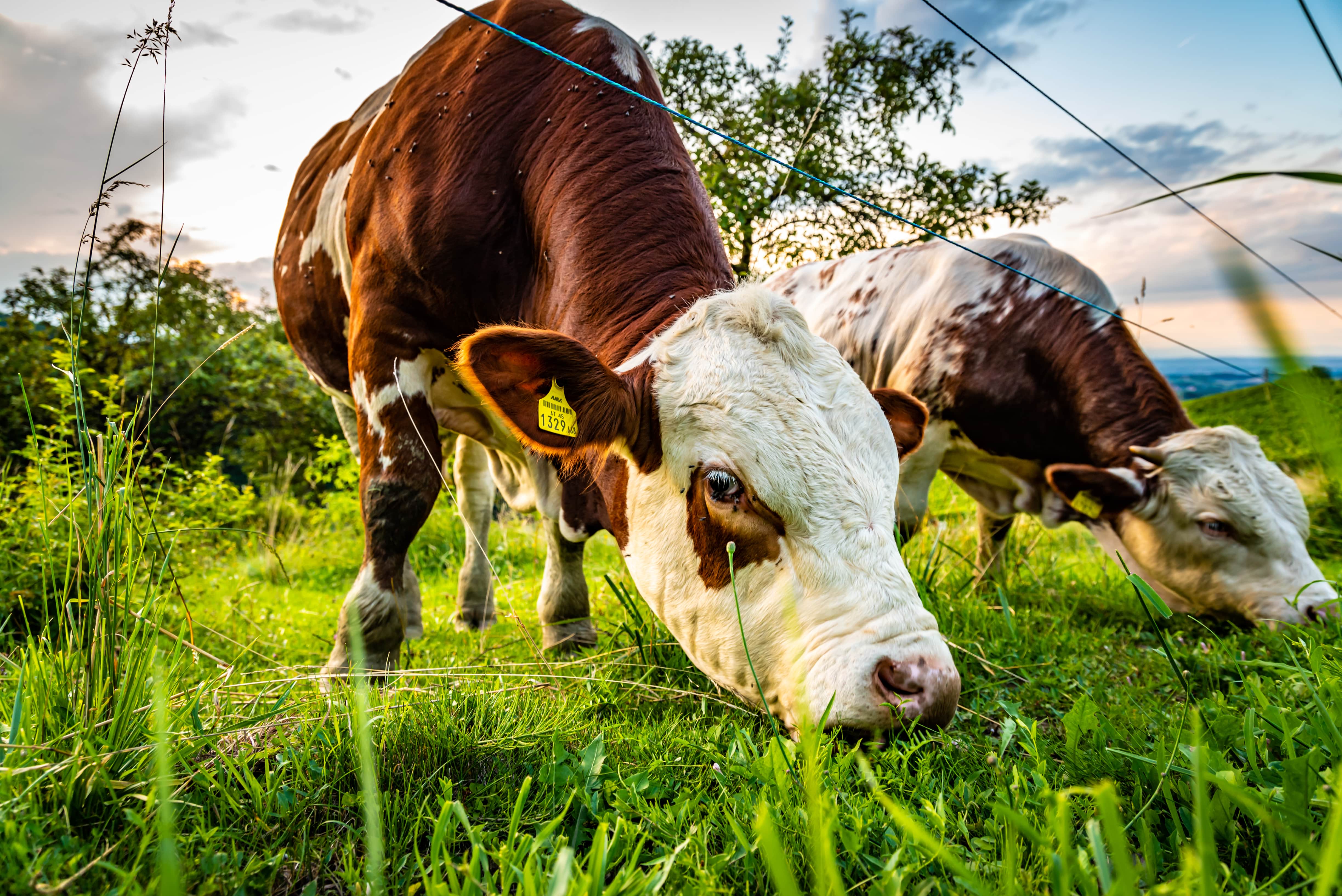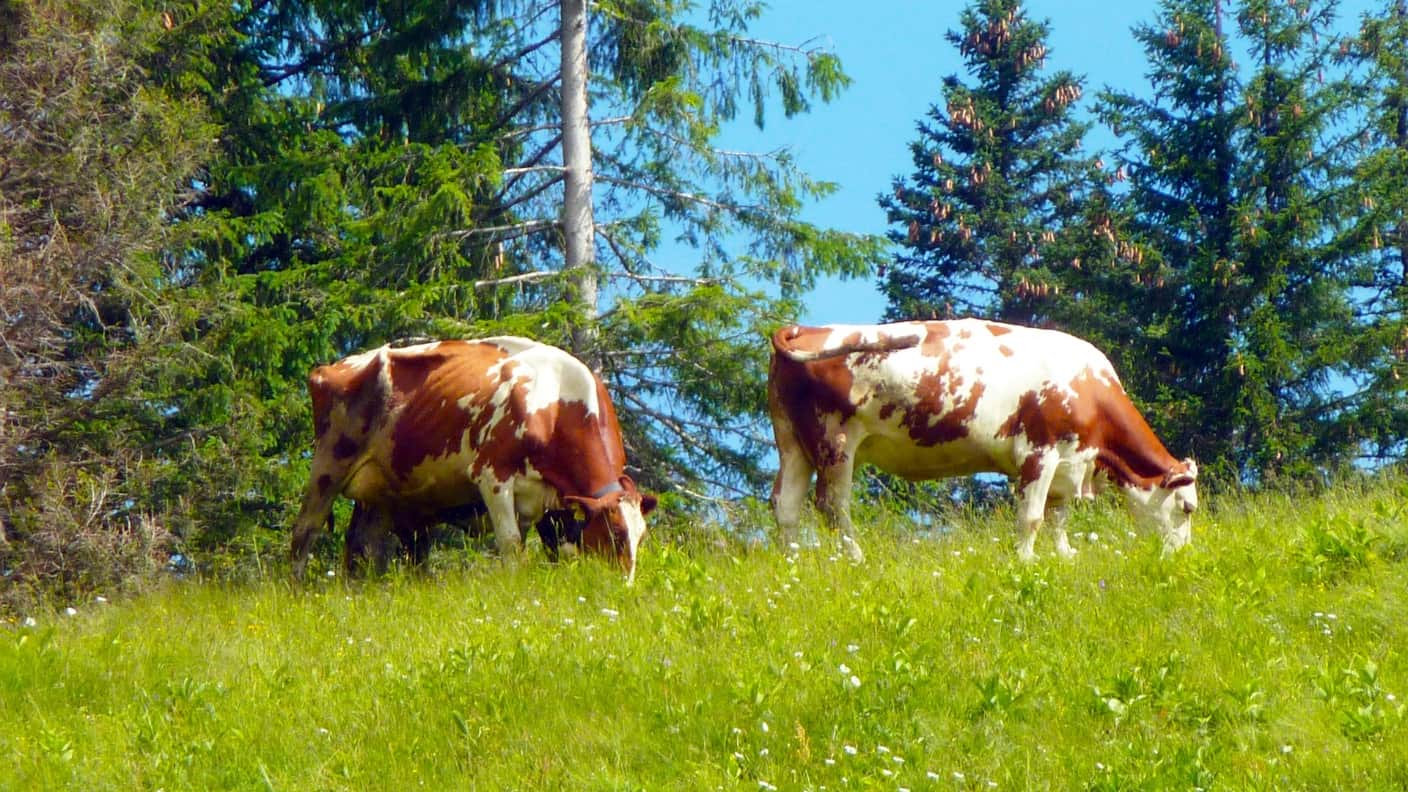Quick, picture a cow!
Bet you pictured a nice chubby spotted cow grazing on a lush green pasture, didn’t you? Well, that’s how it’s supposed to be. Cows are meant to be on pasture.
Fresh air and exercise are good for cows, just as much as it’s good for humans.
Raising your cows on expanses of pasture is so much better than dairy confinement farms where cows are fed grains or ration.
But, the good news is that Australia agrees with us. In Australia, most cows have a diet that’s made up of grass which is either grazed or supplied as hay or silage. Only 2% of the farms in Australia have cows that do not graze.

Let's discuss the key benefits of raising your cows on pasture. But before that let's ask ourselves what is this all about.
What is pasture-raised dairy?
Pasture-raised dairy is a farming practice where cows spend most of the daytime outside – on paddocks of diverse grasses and plants (just picture a salad bar) as is possible.
Grass is considered the most effective source of food for cows. Since most Australian dairies are in the coastal areas with a nice downpour of rain each year, the cows can benefit from the abundant growth of leafy green grass.
On average, about two-thirds of a cow’s diet comes from freshly grazed grass.
Raising your cows on pasture is harder. You’ve got your cows to take care of. And your pasture too! But why do most farmers do it?

Because cows are happiest when they’re on pasture. And it's cheaper too.
And happy cows mean more production and more profits!
It's natural:
This is how your cows’ great-great-great-great grandfathers did it. It’s the way of the universe. It’s natural. It helps them to live low-stress, healthy lives.
The main reason that pasture-based products are so much better is that the animals are so much happier. This is their natural behaviour. Grain-fed animals are made to experience unnatural and very stressful environments like overcrowding.
The milk is more nutritious:
Studies have shown that milk from grass-fed cows is much more nutritious, making it better for human consumption. More grass in a cow’s diet means more omega-3 and conjugated linoleic acids than in conventional milk.
Why? Because cows get nutrients easily from fresh pasture than from grains. Pastures contain more vitamin E, beta carotene, conjugated linoleic acid (CLA) and omega-3 fatty acids.
Both Vitamin E and beta carotene help our bodies fight toxins. CLA helps prevent tumours and breast cancer in women.
Dairy products from grass-fed cows are one of the richest sources of CLA with seven-times more cancer-fighting properties than ordinary milk!
Dairy products from pasture-fed animals are much lower in fat than products from grain-fed animals. Butter and cheeses had up to 500% more CLA when they came from pastured as compared to grain-fed cows.
But most importantly, pasture-raised cow milk tastes better too!
And it’s not just about dairy. Grass-fed meat too is high in Vitamin E, which keeps the meat from spoiling. After two weeks of storage, the grain-fed meat turned brown but the grass-fed meat continued to be nice and red.
It's great for the soil:
Yes, your soil fertility benefits too!
When grass grows in pastures, it helps prevent soil erosion and also increases the ability of the soil to store carbon and keep it out of the atmosphere.
There was a gain of one-half ton per acre per year of carbon on land that is converted from tilled cropland to grassland. Native or planted grasses remove CO2 from the air via photosynthesis and store it in the soil as organic matter or rotting plant parts. This process is also called sequestering and reduces greenhouse gases.
The cows that graze in the pasture spread the manure throughout the pasture. It dries into patties and breaks down quickly and naturally, fertilizing the soil nicely and emitting lesser amounts of methane and other greenhouse gases than would otherwise happen with anaerobic methods like manure pits.
Pasture-raised animals are better for the environment because lesser fossil fuel is required to carry out practises like harvesting feed or spreading manure, thus reducing the farm’s overall carbon footprint.

Healthier cows that produce more milk:
Cows raised on pasture can produce 75% as much milk as when the grain is fed.
Dairy cows that are brought up on pasture have fewer foot problems than those that are raised on grain.
This is because cows that are fed on grain have a higher risk of contracting acidosis, a blood condition where the bicarbonate concentration is below normal. After all, they cannot digest the grain easily.
Cows with this condition tend to also have liver problems and laminitis.
Heifers that are raised on a diet of high grain have a lot of fat that gets accumulated in their udder tissue, thereby affecting their capacity to produce milk.
Grazing on pasture is great for cattle and other ruminants who have multi-stomach digestive systems that expertly draw out nutrients from grass and plants. These animals have to consume roughage to produce their stomach acids.
When ruminants are fed a grain-based diet, less saliva is produced, the stomach acid does not get neutralised and could cause intestinal damage, dehydration, liver abscesses and even death.
The good health of animals raised on pasture has yet another advantage – antibiotics are drugs aren’t used that much on these animals and so fewer antibiotic-resistant bacteria develop.
More green on your land, more green in your hand!
And now – one of the best reasons to raise your cows on pasture? It’s all about the money, honey! You know that making hay or silage is an expensive process and it’s much cheaper to just let your cows chew some of that beautiful, cheap grass.
A few tips to improve your pastures:
Pasture should be young, active and in good supply. You should begin grazing when your cool-season grasses and legumes are 8-10 inches tall and short-growing cool-season grasses and legumes are 4-6 inches tall. This is the optimum height when your pasture quality is awesome, the grass is easily munch-able and the plants have had adequate time to rest.
Rotational grazing or strip grazing is the best way to enhance the relationship between cow and grass, and get the most out of both. Also make sure that shade and a sufficient amount of water are available on the pasture.
In a sustainable farming system, the key focus is on building a cyclic system. Where the needs of one aspect are met by the wastes or by-products of another.
For instance, waste, or animal manure builds the soil and the crops that are in turn, fed to the animals.
But when you industrialise the process, it creates a huge wedge between the pasture and the animal – causing soil depletion on the one hand, and excessive amounts of toxic waste on the other.
Bottom line – cows and pastures are meant to be together! Eating grass, taking a nap under a shady tree, chilling with their fellow cows, drinking water, exploring the lands bare hooved and generally doing cow stuff.
Nothing replaces the nutrient density of fresh, deep-rooted grass powered by nutrient-rich soil that will keep your cows robust and the milk they produce rich and tasty. And that’s why you should pasture-raise your cows!
But setting your animals on pasture alone isn't enough. You also need to measure and manage your pastures to provide maximum nutritional value for your cows. This is how you optimise the grazing system.
Until we meed again, Happy Grazing!
- The Dedicated Team of Pasture.io, 2020-12-07